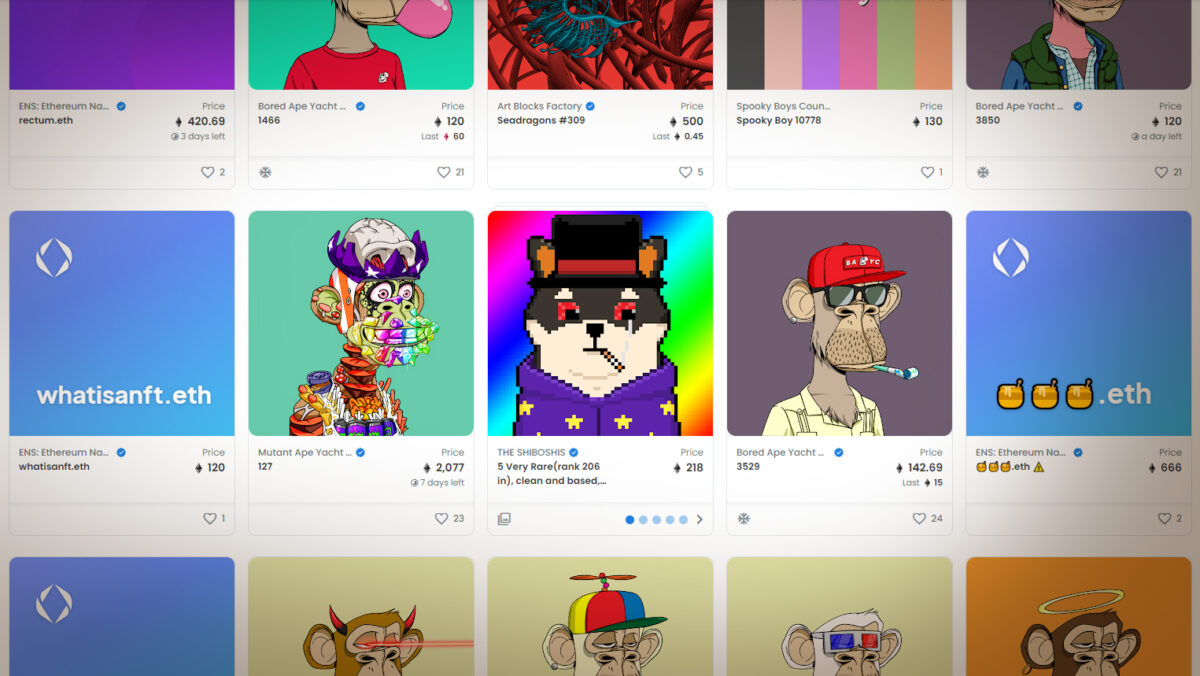How NFTs destroy our literal and artistic climate

Logging into websites like Twitter, I am greeted with tweet after tweet of .jpg images. It seems every day is accompanied by the repetition of the same weird monkey and lion pixel images. A quick Google search gives you auto-fills calling it the future of art, the newest breakthrough of internet culture and artists. Initially, the view and idea of this new concept was revolutionary and exciting for starving artists. More income, more reach, and more accessibility for selling your art.
In reality, non-fungible tokens (NFTs) are anything but.
NFTs are a new form of cryptocurrency. The supposedly encrypted image files (and possibly other forms of digital files and media) that the owners can buy and resell. The pieces don’t necessarily become exclusive. Others can still obtain the piece by saving it, but the interest comes from the idea of being the owner of that supposedly encrypted original and the concept of investment, the prospect of reselling it at a higher price and calling NFTs digital collectibles.
However, many people also see the headlines calling NFTs an environmental nightmare without explaining how they work. The world of NFTs is full of uncertainty and, despite their groundbreaking claims, may be doing more damage than benefit for artists.
Websites and world-renowned companies associated with the digital art climate such as Adobe and Discord have also become interested in this concept, met with immense backlash from artists. A situation involving the art portfolio website Artstation recently dealt with this, causing them to abandon the idea.
The mining (energy used to encrypt and develop the unique files) of NFTs uses an exponential amount of Ethereum, the blockchain that develops NFTs. One piece also produces more carbon than many minor countries annually. Since they’re still such a new concept, it’s unknown how this will affect our already dangerously changing climate in the long run, but speculation based on other cryptocurrencies tells us the future looks bleak.
Skeptics aren’t the only ones with worries either. A concern of buyers has been the IRS recently recognizing NFTs as a source of income, which was also greeted with backlash when it was decided that they’d need to be claimed on tax return as a result of being recognized, which shows a lot of instability and hypocrisy in the owning of NFTs.
But while investors accumulate more wealth, artistic creativity is devalued. With the ability to create these pieces in a matter of seconds, it significantly disrespects the time, resources, and skills artists use up to make their pieces — not to mention the decades of their lives they spent perfecting their craft. Art theft and copying is also still present in the NFT world.
The growing craze over NFTs and the ability to create many of these images fast with algorithms has the same effect as over-printing money: loss of value and increase of energy in production.
It’s clear to see a trend in the majority of these images selling for multi-hundred thousand (or million) dollars — they’re often some basic or pixelated portrait piece and quite underwhelming compared to the incredible variety and world of digital illustration. So, why should a tiny .jpg with no effort into it sell for thousands of times the worth of a fully rendered digital illustration with tens of hours poured into it?
The point of NFTs is their resale value and their apparent concept of collectibility, not what the image is actually of. You could buy an AI-created, 100×100 pixel monkey for $800 000, or commission an artist for an incredible piece they put their heart and flair into for $300. This greatly ties into an already present issue in the art world of scams and the argument of what really counts as art.
Not all pieces are these early internet-looking profile photos, however. Some artists are monetizing their pieces as NFTs as well, such as Beeple, who was a major breakthrough in NFT as art and gave many people an optimistic view on the future of digital art.
Unfortunately, this is a pretty isolated event and artists still have to fight the algorithm to get pieces seen and known, let alone sold, now paired with the aforementioned consequence of climate-destroying energy usage. It disrespects the time artists — even if it’s yourself — put into work and forces the question of why you’re doing what you are.
Ultimately, NFTs degrade art to its monetized value, how much money it will make you or a buyer, and not passion or commentary.
NFTs do not reflect what art should be about. Art can be about making a living, and capitalism has forced us to highly value monetization of craft for survival. But that shouldn’t be the base reason. Art is to be critical, emotional, and passionate. NFT selling completely destroys the feelings associated with art and revitalizes the art community as scams specifically tailored for how much it puts in your pocket instead of a craft worth time and money.
Invest your time and money into local, respectable creators, especially marginalized, of all media. Digital art is a vast and new world, but we must remember the point of sustainable and respectable creation and patronage.








